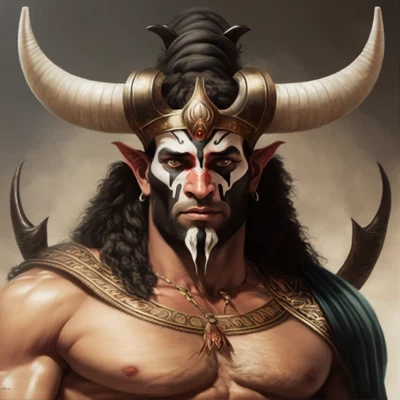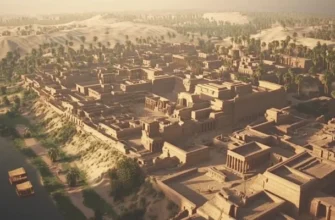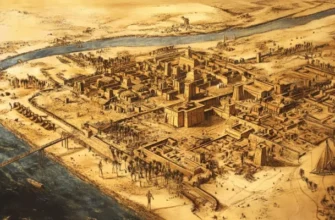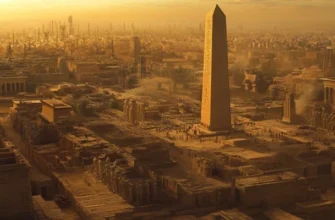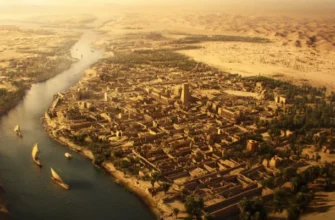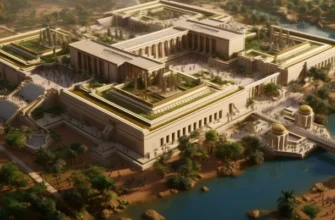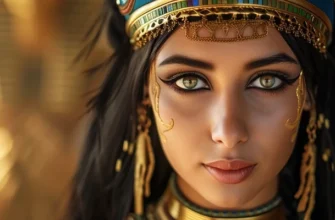In ancient Egypt, gods and goddesses were very important to people’s lives and culture. They believed that the gods had magical powers that could help people in their daily lives. One such god is Aah.
Aah was an ancient Egyptian god who played an important role in mythology and religion. He was the god of creation and fertility, as well as the god of land and economy. Belief in Aah helped people gain prosperity, harvest, and protection from disaster.
Aakh’s characteristics were reflected in his images. He was depicted as a man with the head of a bull, as well as the symbols of the sun and the eagle. These symbols pointed to his role as the god of creation and the ruler of the heavenly forces.
The cult of Aah was widespread throughout Egypt and was an important element of religious life. People believed that he was the protector of the land and the economy, and his patronage helped to ensure the harvest and protection from hostile forces. The Temple of Aah was built in Memphis and was one of the largest temples in Egypt.
In later periods, Aah became a more syncretic god, combining features of other gods. This is due to changes in religious beliefs and cultural influences that changed throughout the history of ancient Egypt.
All in all, Aah is an important element of ancient Egyptian religion and culture. Belief in him helped people secure crops and protection from negative forces, and his cult was widespread throughout Egypt. Various images and depictions of Aah have survived to this day, and they are an important source for studying ancient Egyptian mythology and religion.
Although Aah is no longer a deity today, his importance in the history and culture of ancient Egypt is invaluable. He helps us to better understand the faith and beliefs of our distant ancestors, and shows us how important religious life was to Egyptian civilization.
History and mythology
The Egyptian god Aah has been known since ancient times, and the first references to him can be found on the walls of ancient temples and papyri. It is likely that the cult of Aah appeared as early as the era of the ancient kingdom, around 2500 BC.
According to mythology, Aakh was created by the god Ra, who created him from his own blood. According to another version, Aah was born by the semen of the god Atum, who created the world out of chaos.
Aah symbolized the early evening, when the sun sinks into the underworld, but at the same time he was also associated with the morning sun, which returns to the world after the night. He was also associated with the harvest and was the protector of agriculture and farming.
In mythology, Aah was also depicted as the creator of the world, pulling snakes out of the water and creating the entire world. He was depicted with a snake on his head, symbolizing his power over the world.
Aah’s role in ancient Egyptian mythology was very important. His cult was widespread throughout Egypt, and he was associated with various aspects of life, such as morning and evening, harvest, and protection from evil forces. The belief in Aah was deeply rooted in Egyptian civilization, and its influence can be felt to this day.
Images and symbolism
Aah’s appearance was often depicted in the form of a bull, although sometimes he appeared as a man with bull horns. This symbolized his strength, power, and might. In art, Aah was depicted as a bull, sometimes with three heads, symbolizing the unity of the three main gods of Egypt: Ra, Osiris, and Ptah. Also in the images of Aah, one can see the sun, symbolizing his role in the pantheon as the god of creation.
Symbolism associated with Aah includes bull horns, symbolizing his power, and the sun, emphasizing his role in the creation of the world. His name also translates as “that which is created from itself,” symbolizing his role in the creation and rebirth of the world.
Compared to other Egyptian gods and goddesses, Aah is distinguished by his role in creating the world and rebirth after death. He was often compared to other creator gods such as Ptah and Ra, but his unique role in the pantheon of gods was recognized and revered.
The cult of Aah in ancient Egyptian society
Aah was one of the most revered gods in ancient Egypt. His cult spread throughout the country, including the capital city of Memphis, where a large shrine was dedicated to him. Religious practices associated with Aah included sacrificial rites, prayers, and art.
Aah was an important creation god, he was the first god to emerge from chaos and create the world. He was also associated with death and rebirth, as a symbol of eternal life. Aah’s role in ancient Egyptian culture was to unite the country and ensure its prosperity.
Aah was depicted as a man with a bull’s head, symbolizing his power and strength. In art, he was also depicted as the sun rising from the mountain, giving light and life. The symbols of Aah were the bull, the sun, and the lotus.
In the hierarchy of Egyptian gods and goddesses, Aakh was higher than other gods and goddesses, but his role was not as important as that of Ra or Osiris. Nevertheless, Aah was highly respected among Egyptian rulers, whose name was mentioned in many royal titles and names.
All in all, the cult of Aah had a great influence on the life and culture of the ancient Egyptian people, and still remains one of the most interesting pages in Egyptian mythology and religion.
Conclusion.
All aspects related to the god Aah show that he was one of the most important gods in ancient Egyptian mythology and religion. He was associated with the creation of the world and was responsible for life, death, and rebirth. In art, Aah was depicted as the main god with animal features and symbolism related to life and the earth. He had a large cult among the ancient Egyptian peoples and occupied an important place in the hierarchy of Egyptian gods and goddesses. In general, the god Aah is one of the most interesting and significant gods in ancient Egyptian mythology.
